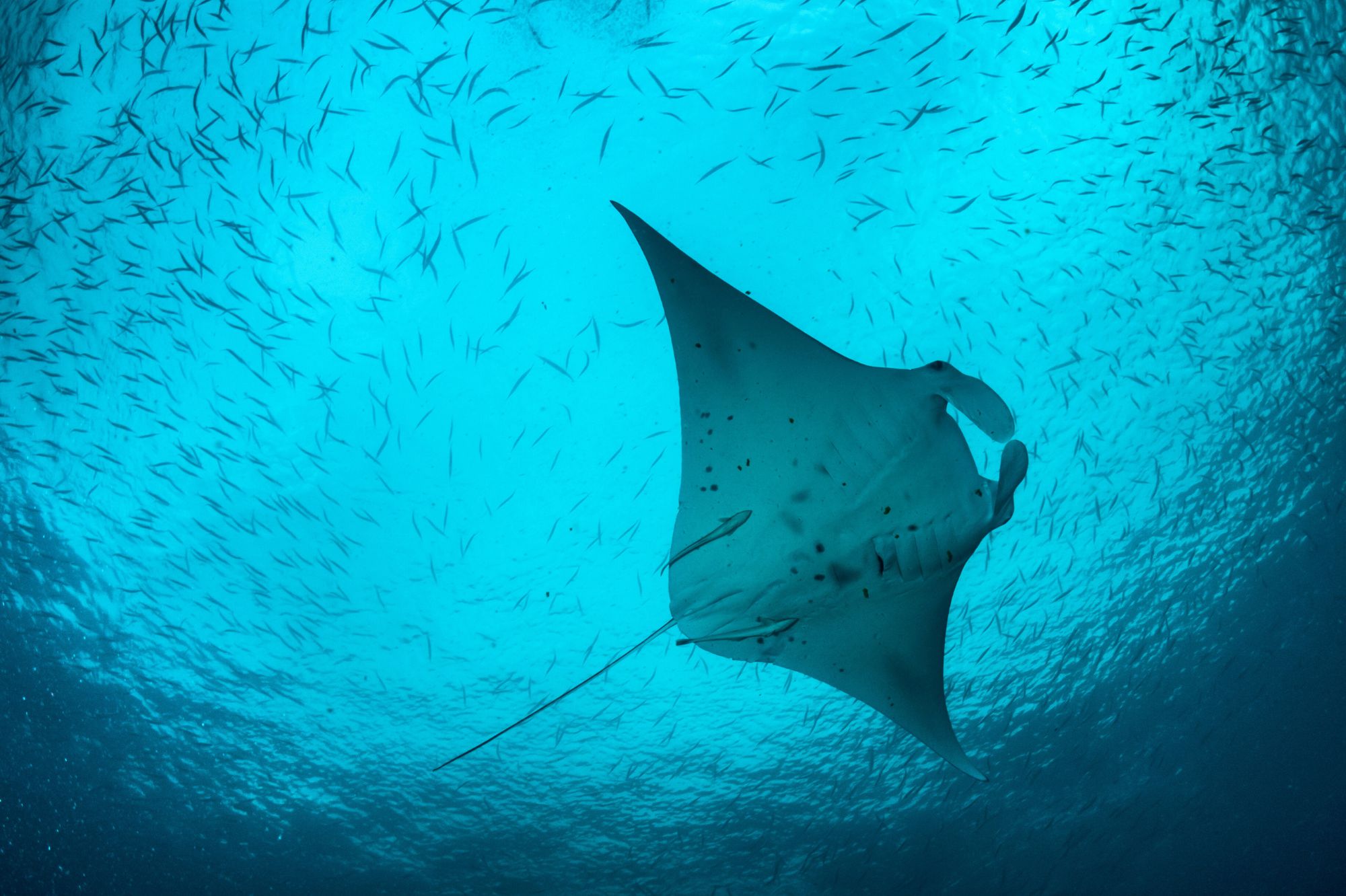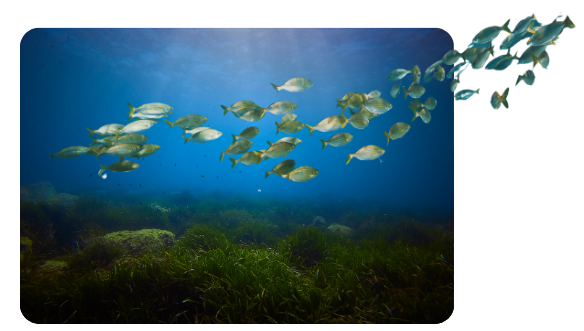Story
The Role of Climate-Smart Marine Protected Areas in Achieving 30x30
24 April 2025
PML’s Professor Ana M Queirós has co-authored a landmark new report, released today, which explores how climate change mitigation, adaptation and resilience can be integrated into the design and placement of Marine Protected Areas to ensure they are ‘future-proof’ in a changing climate.

Image caption: A manta ray feeding around the western Pacific archipelago of Palau, a nation in the Micronesia region of the western Pacific Ocean, comprised of approximately 340 islands. In 2015, Palau approved the world’s sixth-largest area to be fully protected from fishing or drilling.
As the world works toward the ambitious “30×30” target set out in the Kunming-Montreal Global Biodiversity Framework – to protect 30% of land and ocean by 2030 – right now, only 8% of the ocean is currently under any form of protection. At the same time, global climate goals remain off track, with recent assessments highlighting inadequate action on emissions and climate finance.
To truly safeguard marine biodiversity in the face of escalating climate threats, scientists are calling for the development of climate-smart marine protected areas (MPAs). These MPAs are designed to adapt to and mitigate climate impacts – such as such as ocean acidification, sea-level rise, species distribution shifts and oxygen availability – by building resilience into conservation strategies.
Fully protected MPAs can significantly boost ecosystem health, with fish biomass shown to increase by over 600% compared to unprotected areas. Integrating climate resilience into MPA design will be vital to future-proofing ocean conservation efforts.
The report, titled: “Navigating Change: The Role of Climate-smart MPAs in Achieving 30×30”, reveals results from work led by the Blue Marine Foundation and Plymouth Marine Laboratory, supported by several partners including the Marine Conservation Institute, UBC Institute for the Oceans and Fisheries, the Global Ocean Trust and the University of the Western Philippines.
It outlines the latest scientific thinking around climate-smart MPAs, and demonstrates that this can be integrated into the design, placement and financing of MPAs to ensure they are future-proof and can deliver lasting conservation benefits.
It also emphasises the importance of securing sustainable funding and working with local communities to achieve effective management and explores how these principles can be applied to Areas Beyond National Jurisdiction (ABNJ).
Professor Ana M Queirós commented:
“The world has set itself the goal of delivering the ambition to protect 30% of the ocean by 2030, our 30×30 target (UN Kunming-Montreal Global Biodiversity Framework). This target is much needed in our ocean increasingly occupied by human activities, which are causing unprecedented damage to marine wildlife, its biodiversity, and leading to a loss of essential marine habitats, as noted in the last IPBES report. These species and habitats play a vital role in the regulation of our world, in food provision, cultural services, in the regulation our climate, in helping provide the oxygen we breathe. Without them, there is no life in our planet.”
“And yet, they too are under the most severe impacts of climate change, which altering deeply ocean food webs, species habitat distributions and the functioning of our beautiful and vital ocean. As we come together to deliver 30×30 it is therefore essential that we design conservation measures that can stand up to the challenges of climate change, that help ocean wildlife and habitats cope with and adapt to climate change, and so that the ocean can continue to help regulate our climate. Such climate-smart marine protected areas are a fundamental tool that may help us curb both the threats of climate change and biodiversity loss on ocean habitats and should thus be at the fore of the delivery of 30×30. We have good examples of where policy, science and the private sector are coming together to deliver these.”
“Now is the time to take that vision to the global ocean, to protect it for the next generations.”
Contributing authors include PML’s Professor Matt Frost and Dr Claire Szostek, and PML Honorary Fellow Torsten Thiele of the Global Ocean Trust.
Access the report, “Navigating Change: The Role of Climate-smart MPAs in Achieving 30×30”, here >>
Related information
This report was co-authored by Maddie Millington-Drake, Sophie Locke, Sofia Regalado (Blue Marine Foundation) and Prof. Ana M Quierós (Plymouth Marine Laboratory).
The authors would like to thank the following contributing authors: Kaija Barisa (Blue Marine Foundation), Prof. Matt Frost, Dr. Claire Szostek, (Plymouth Marine Laboratory), Dr. William Cheung, Juliano Palacios-Abrantes (The University of British Colombia), Prof. Benjamin Jareta Gonzales (Western Philippines University BGERMC), Dr. Sarah Hameed, Dr. Lance Morgan, Elizabeth Pike (Marine Conservation Institute) and Torsten Thiele (Global Ocean Trust).
The publication of this report was made possible through the generous support of: The Flotilla Foundation and supporters of Blue Marine’s Climate and Science Units.
Disclaimer: The opinions and suggestions provided in this report are solely those of the authors and do not necessarily reflect the views and policies of the organisations involved.
